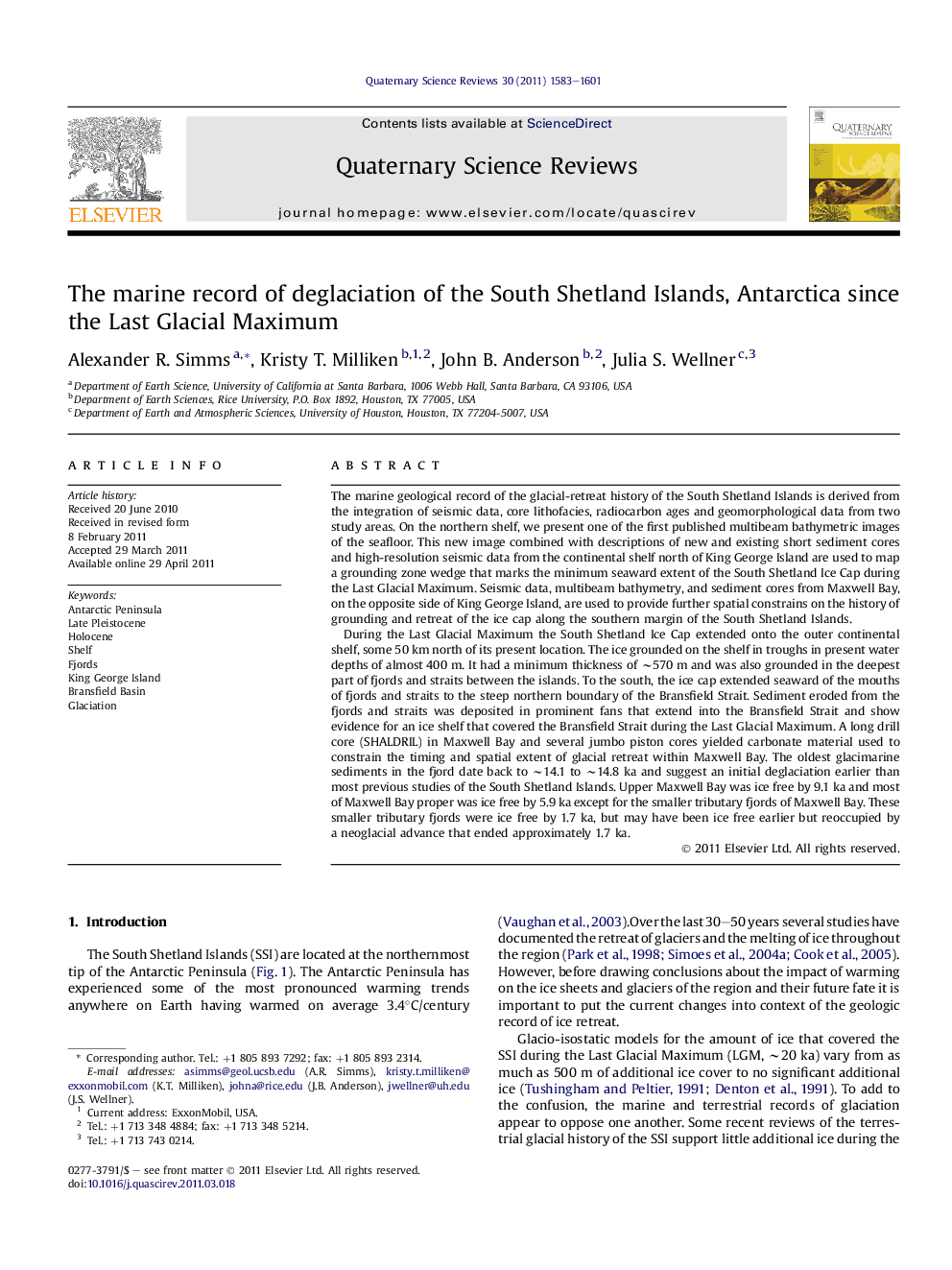| کد مقاله | کد نشریه | سال انتشار | مقاله انگلیسی | نسخه تمام متن |
|---|---|---|---|---|
| 4736845 | 1640911 | 2011 | 19 صفحه PDF | دانلود رایگان |

The marine geological record of the glacial-retreat history of the South Shetland Islands is derived from the integration of seismic data, core lithofacies, radiocarbon ages and geomorphological data from two study areas. On the northern shelf, we present one of the first published multibeam bathymetric images of the seafloor. This new image combined with descriptions of new and existing short sediment cores and high-resolution seismic data from the continental shelf north of King George Island are used to map a grounding zone wedge that marks the minimum seaward extent of the South Shetland Ice Cap during the Last Glacial Maximum. Seismic data, multibeam bathymetry, and sediment cores from Maxwell Bay, on the opposite side of King George Island, are used to provide further spatial constrains on the history of grounding and retreat of the ice cap along the southern margin of the South Shetland Islands.During the Last Glacial Maximum the South Shetland Ice Cap extended onto the outer continental shelf, some 50 km north of its present location. The ice grounded on the shelf in troughs in present water depths of almost 400 m. It had a minimum thickness of ∼570 m and was also grounded in the deepest part of fjords and straits between the islands. To the south, the ice cap extended seaward of the mouths of fjords and straits to the steep northern boundary of the Bransfield Strait. Sediment eroded from the fjords and straits was deposited in prominent fans that extend into the Bransfield Strait and show evidence for an ice shelf that covered the Bransfield Strait during the Last Glacial Maximum. A long drill core (SHALDRIL) in Maxwell Bay and several jumbo piston cores yielded carbonate material used to constrain the timing and spatial extent of glacial retreat within Maxwell Bay. The oldest glacimarine sediments in the fjord date back to ∼14.1 to ∼14.8 ka and suggest an initial deglaciation earlier than most previous studies of the South Shetland Islands. Upper Maxwell Bay was ice free by 9.1 ka and most of Maxwell Bay proper was ice free by 5.9 ka except for the smaller tributary fjords of Maxwell Bay. These smaller tributary fjords were ice free by 1.7 ka, but may have been ice free earlier but reoccupied by a neoglacial advance that ended approximately 1.7 ka.
► We reconstruct the deglacial history of the South Shetland Islands since the LGM.
► We show the first grounding zone wedge on the northern shelf.
► We report the first tills from the northern shelf.
► Cores from Maxwell Bay detail Holocene deglacial history for King George Island.
Journal: Quaternary Science Reviews - Volume 30, Issues 13–14, June 2011, Pages 1583–1601